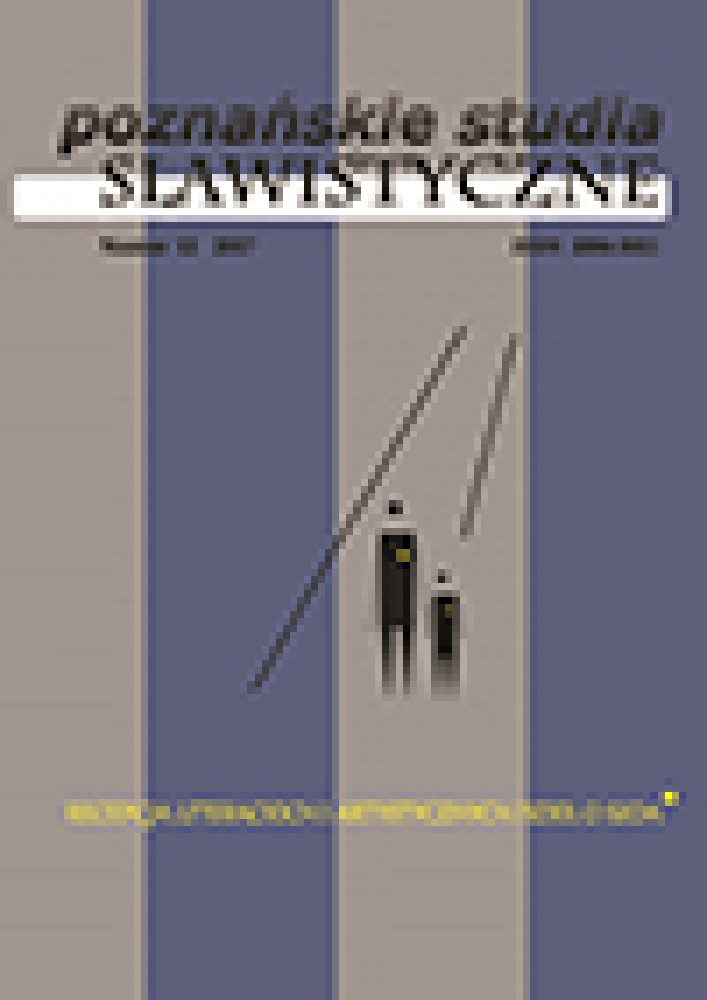Abstrakt
This article deals with the re-interpretation of Tadeusz Hołuj’s drama Puste pole (1963; The Empty Field) and its theatrical staging by Józef Szajna in 1965. Based on the drama I want to demonstrate how the artists – who were both survivors of the concentration camp in Auschwitz – managed re-presenting the Holocaust despite the political situation and the accompanying anti-Semitic government campaign in Poland in the 1960s. The reception of the drama of then and nowadays shows how that re-presentation was once interpreted due to the political circumstances, which made the issue of the Holocaust and the Jews bannend from public life, language, and memory. Finally I explore how Hołuj’s drama can be read today when we approach it via postcatastophic re-reading determined by after-knowledge, retrospection, and retroactivity.Bibliografia
Artwińska A., Czapliński P., Molisak A., Tippner A., 2015, Wstęp, „Poznańskie Studia Polonistyczne. Seria Literacka” Nr. 25, Po Zagładzie. Narracje postkatastroficzne, S. 9–18.
Bołtuć I., 1965, Pole dla Szajny!, „Kultura” Nr. 51.
Głowiński M., 2011, Kręgi obcości. Opowieść autobiograficzna, Kraków.
Gross J.T., 2000, Sąsiedzi. Historia zagłady żydowskiego miasteczka, Sejny.
Gross J.T., 2008, Strach. Antysemityzm w Polsce tuż po wojnie: historia moralnej zapaści, Kraków.
Gross J.T., 2011, Złote żniwa. Rzecz o tym, co się działo na obrzeżach zagłady Żydów, Kraków.
Hansen I., 2015, „Nie wieder Auschwitz!” Die Entstehung eines Symbols und der Alltag einer Gedenkstätte 1945–1955, Göttingen.
Hirsch M., 2008, The Generation of Postmemory, „Poetics Today” Nr. 29,1, S. 103–128.
https://doi.org/10.1215/03335372-2007-019p
Hołuj T., 1963, Puste pole, „Dialog” Nr. 4, S. 5–33.
Hopfinger M., 2016, Zamiast wstępu, in: Zagłada w „Medalionach” Zofii Nałkowskiej. Teksty i konteksty, red. T. Żukowski, Warszawa, S. 9–25.
Janicka E., 2011, Festung Warschau, Warszawa.
Kasper J., 2014, Für eine Philologie der Katastrophe, in: Unfälle der Sprache. Literarische und philologische Erkundungen der Katastrophe, hg. v. O. Ette, J. Kasper, Wien, S. 7–20.
Leder A., 2014, Przenośna rewolucja. Ćwiczenia z logiki historycznej, Warszawa.
Niziołek G., 2013, Polski teatr Zagłady, Warszawa.
Romanska M., 2014, History and Holocaust in „Akropolis” and „Dead Class”, London–New York–Delhi.
Tippner A., 2015, Postkatastroficzne relikty i relikwie: los obrazów po Holokauście, übersetzt von K. Adamczak, A. Artwińska, „Poznańskie Studia Polonistyczne. Seria literacka” Nr. 25, Po Zagładzie. Narracje postkatastroficzne, S. 237–255.
Young J.E., 1997, Formen des Erinnerns. Gedenkstätten des Holocaust, übersetzt von M. Ozvalda, S. Rupprecht, Wien.
Žižek S., 1992, Der Erhabenste aller Hysteriker. Psychoanalyse und die Philosophie des deutschen Idealismus, übersetzt von I. Charim, Wien–Berlin.
Licencja
Prawa autorskie (c) 2017 Katarzyna Adamczak

Utwór dostępny jest na licencji Creative Commons Uznanie autorstwa – Bez utworów zależnych 4.0 Międzynarodowe.
